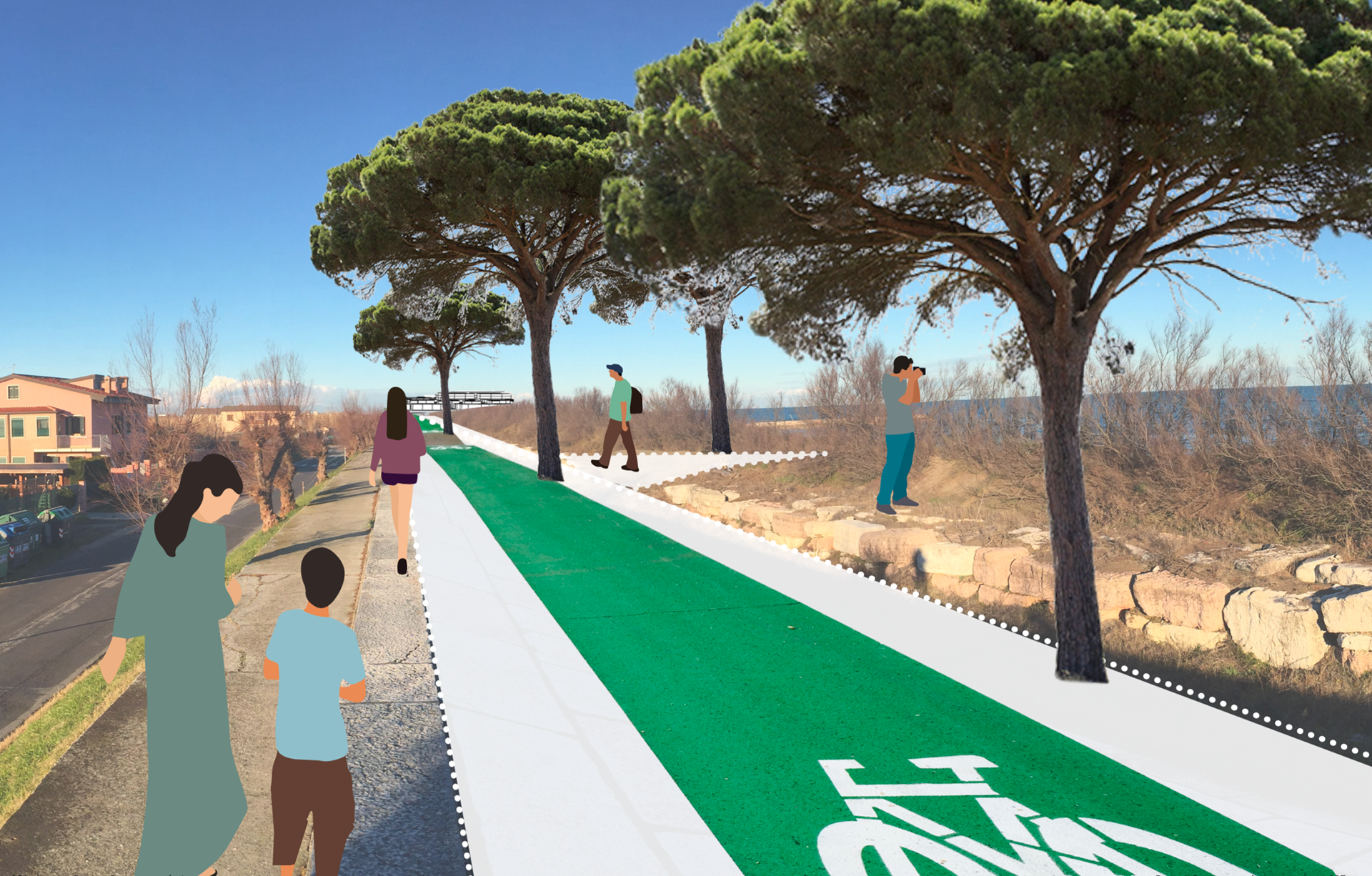
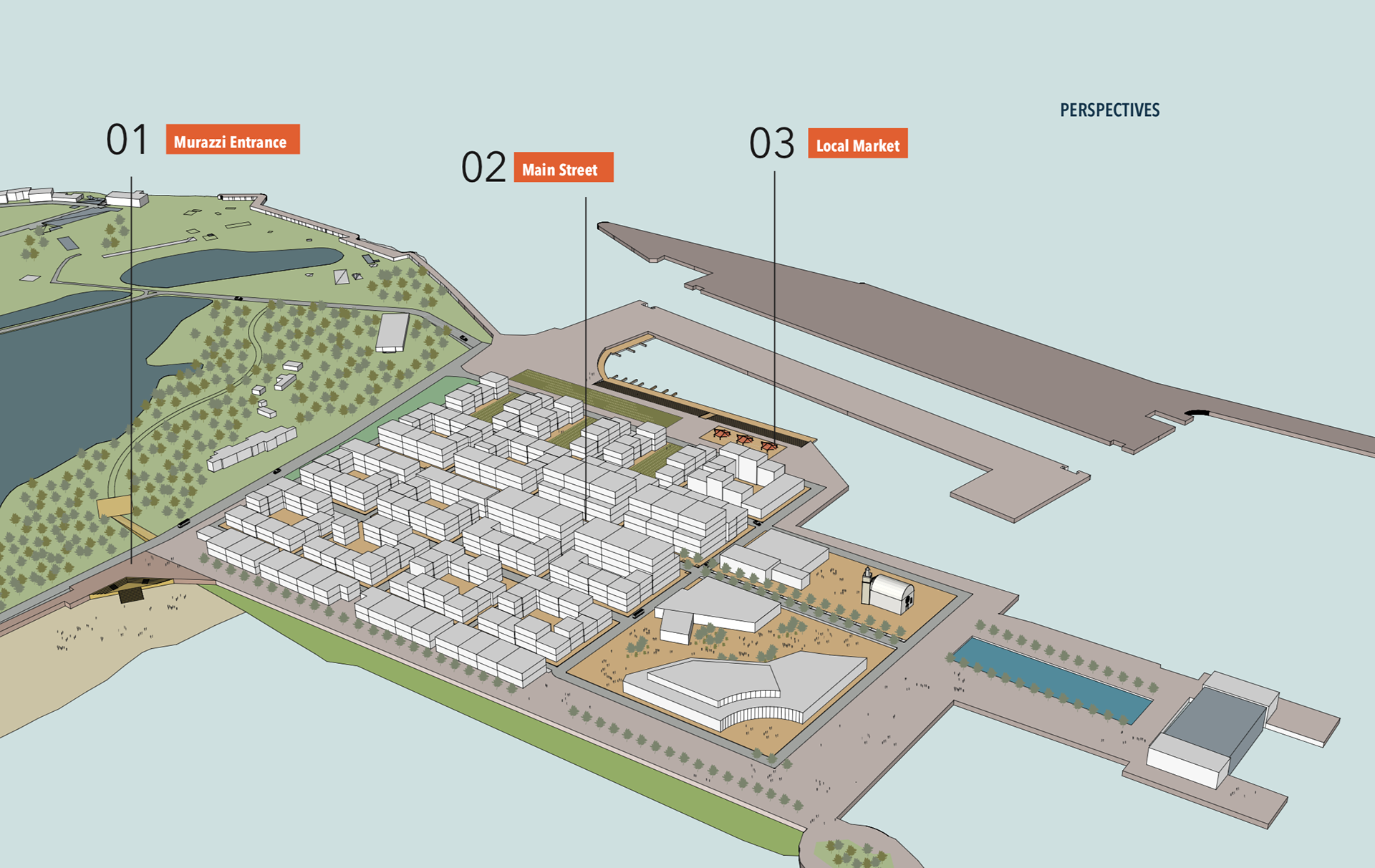
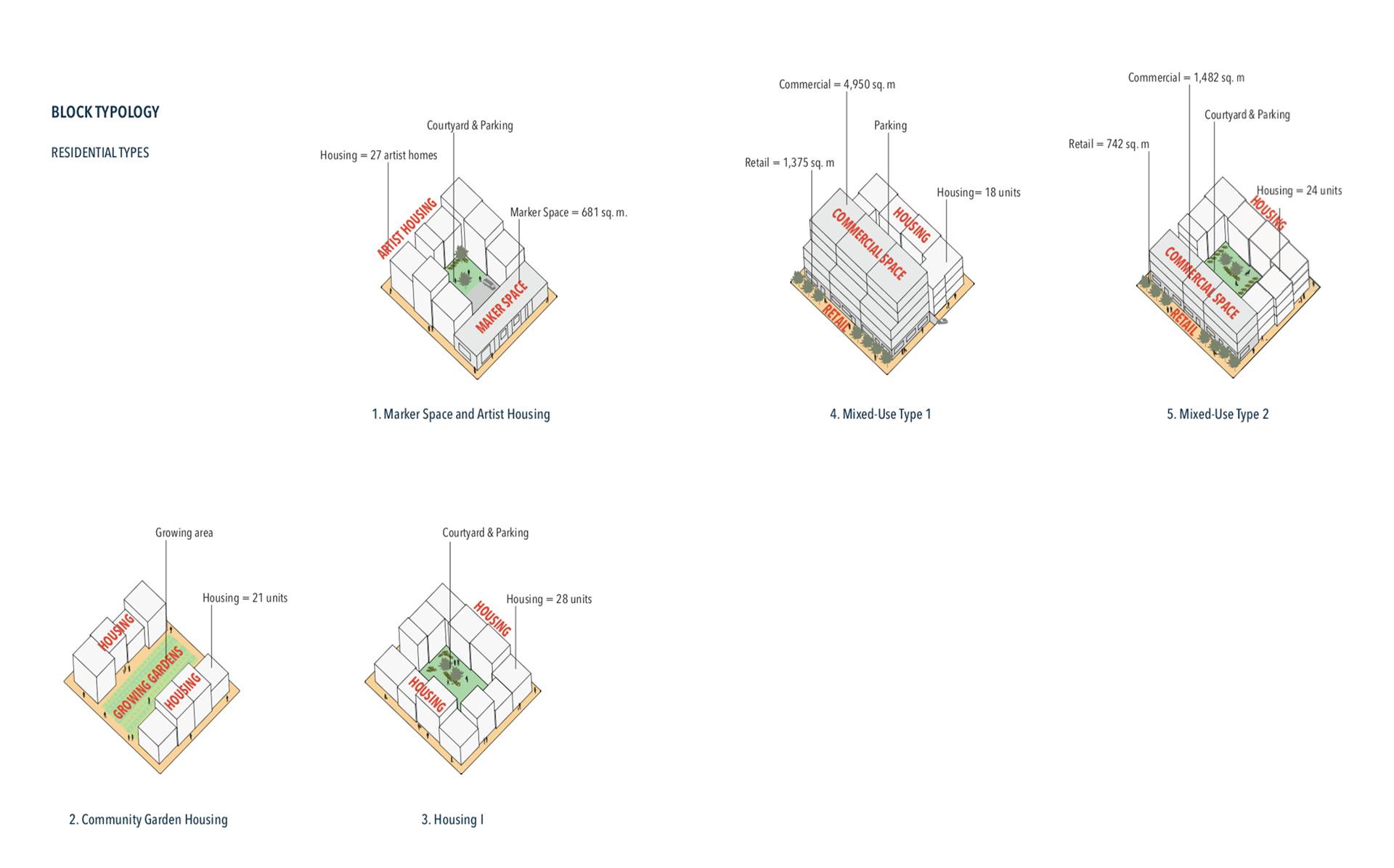
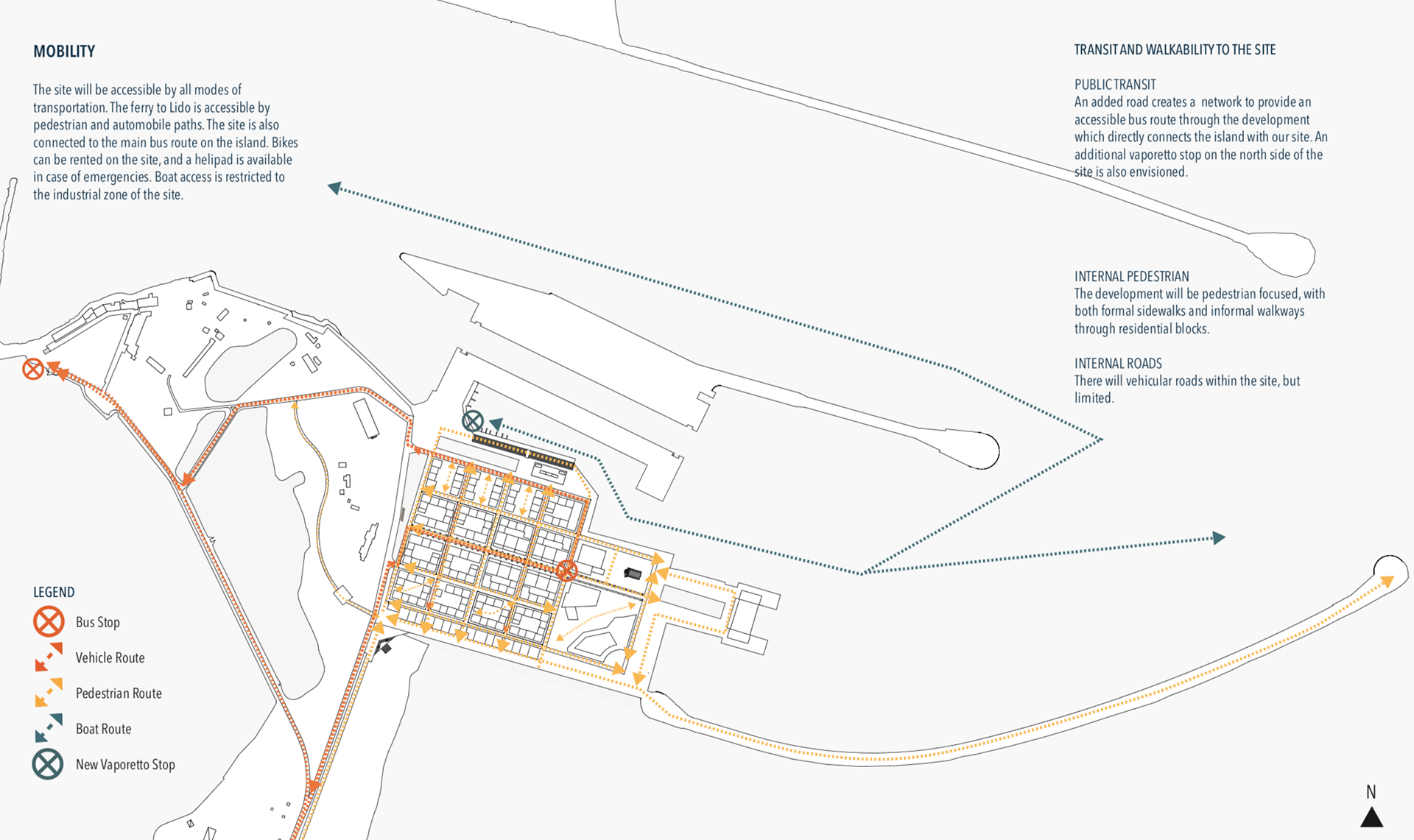

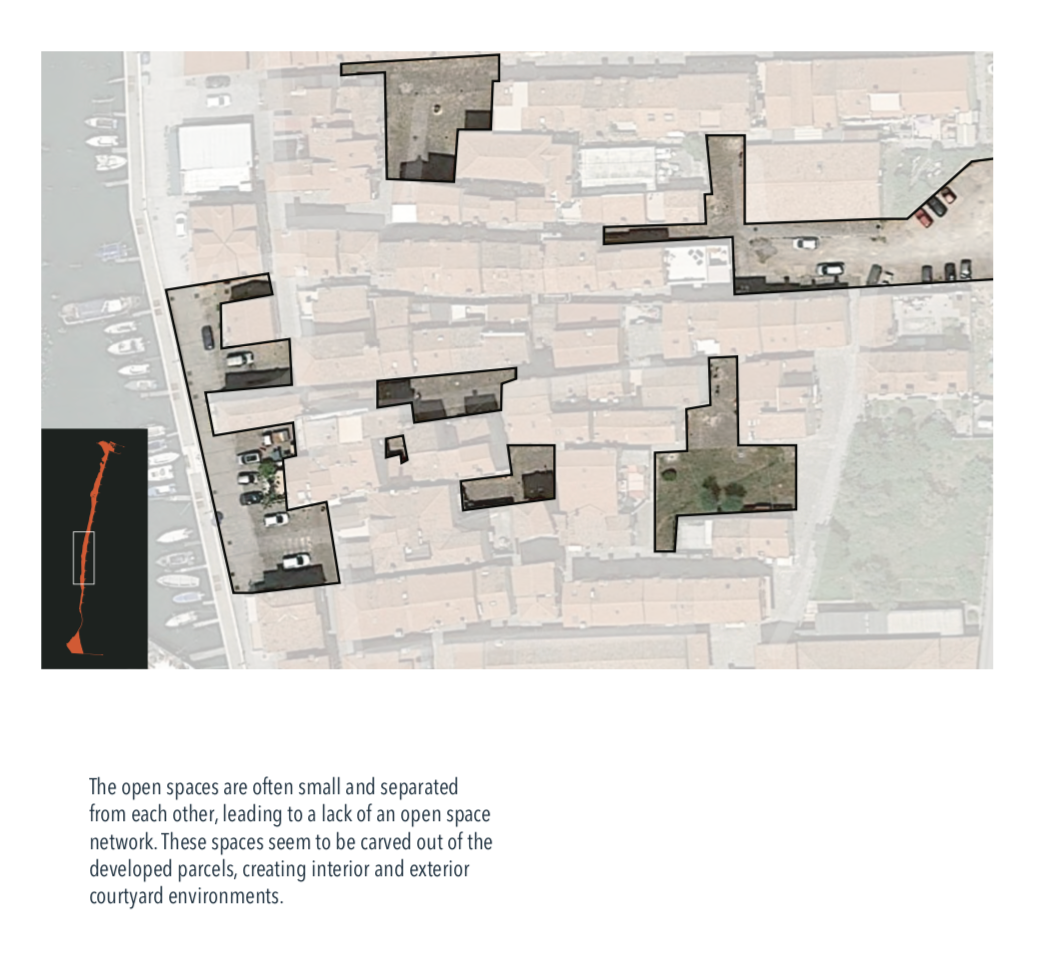
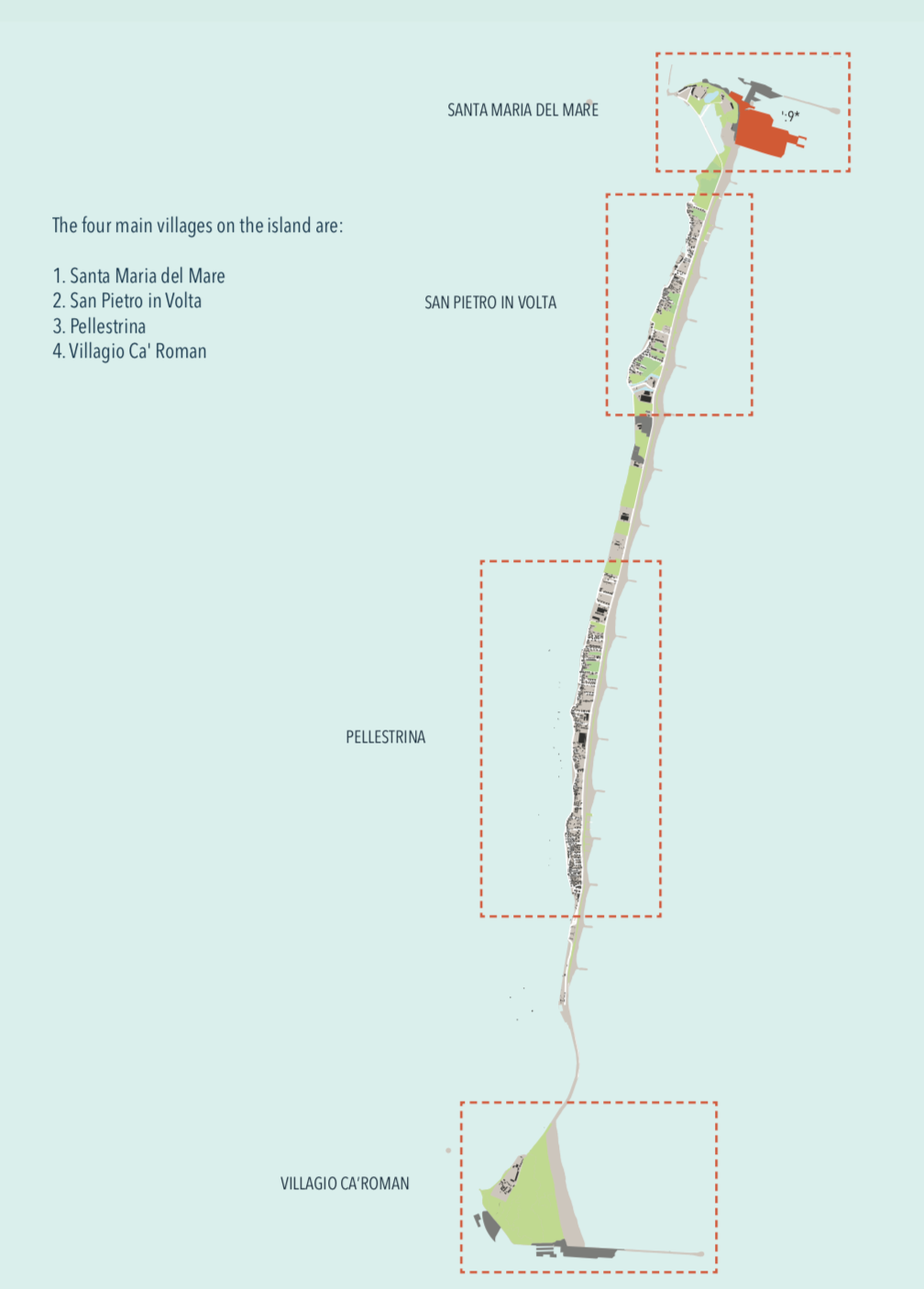
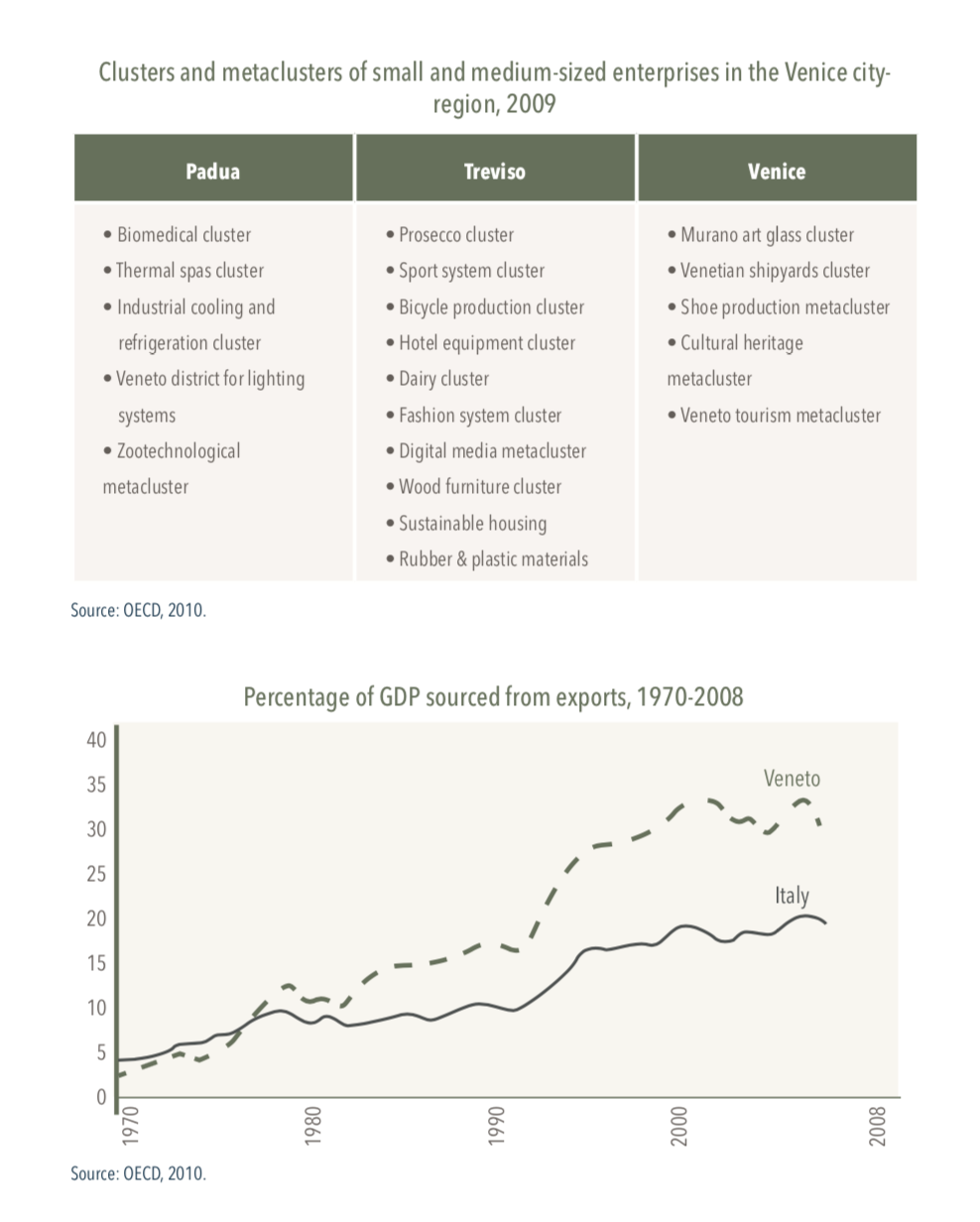


For the last fifteen years the Italian government has been building the Experimental Electromechanical Module floodgates (MOSE) in the inlets from the Adriatic Sea to the Venetian Lagoon, to protect the historic city of Venice from flooding events. At the same time MOSE represents just one technological solution for the climate resiliency of Venice and its surrounding islands--in the face of additional varied and complex socio-environmental threats. Broader threats include subsidence, infrastructure degradation, the pressures of mass tourism, and a decline in the resident population on the islands of the lagoon. MOSE's construction site, a 180,000 square meter concrete platform, at the Malamocco inlet represents a uniquely massive space to respond to these forces. A team of Massachusetts Institute of Technology students use site and environmental systems planning approaches to suggest three hypothetical visions for this site that serve the residents of Pellestrina and the larger socio-economic development for the lagoon islands, while ensuring that these options bolster residents' ability to respond to urban disaster risk. The design concepts explore a range of demolition and reuse possibilities for the site in their three explorations: deconstruction and sustainable fishing, contextual tourism that can shift to disaster resilience, and a potential reuse of the most elevated area on Pellestrina to form a new village in the face of sea level rise.
They were:
The Future of Fishing: Repurposes MOSE’s infrastructure for a modern-day local economy based on new and traditional fishing technologies
Resilience in Reuse: A new form of coastal defense that builds on the site’s historic assets, bringing life to the MOSE platform and preparing Pellestrina for a new era.
Murazzi 2.0: Transforming divisive infrastructure into a connection. This project proposes design elements that connect the villages of Pellestrina to their history, to the Adriatic and to a site of new opportunity.
Azka Mohyuddin and I developed the Murazzi 2.0 concept.
Pellestrina’s long history as a barrier island and protector of the region as created infrastructures that have divided island life, both north-south and east-west. The site is located at the north end of the murazzi, at an elevation that is secure from most flooding predictions. It is close by to public transportation, the beach and a natural marshland that makes it an ideal spot for both tourism and a more recreational lifestyle that is well-connected to the region. Easy access to the Adriatic and agricultural space supports the existing fishing and gardening industries on the island. Murazzi 2.0 begins with a transformation of the murazzi from a seawall into a pleasant and active pathway that leads the villages of Pellestrina directly to the MOSE platform site. A development at this site, with the appropriate programming, can provide a destination the brings the villages on Pellestrina together, highlights the island’s histories of coastal protection and economic development, and provides a physical and intentional opportunity to open the island to the Adriatic and its uses.
